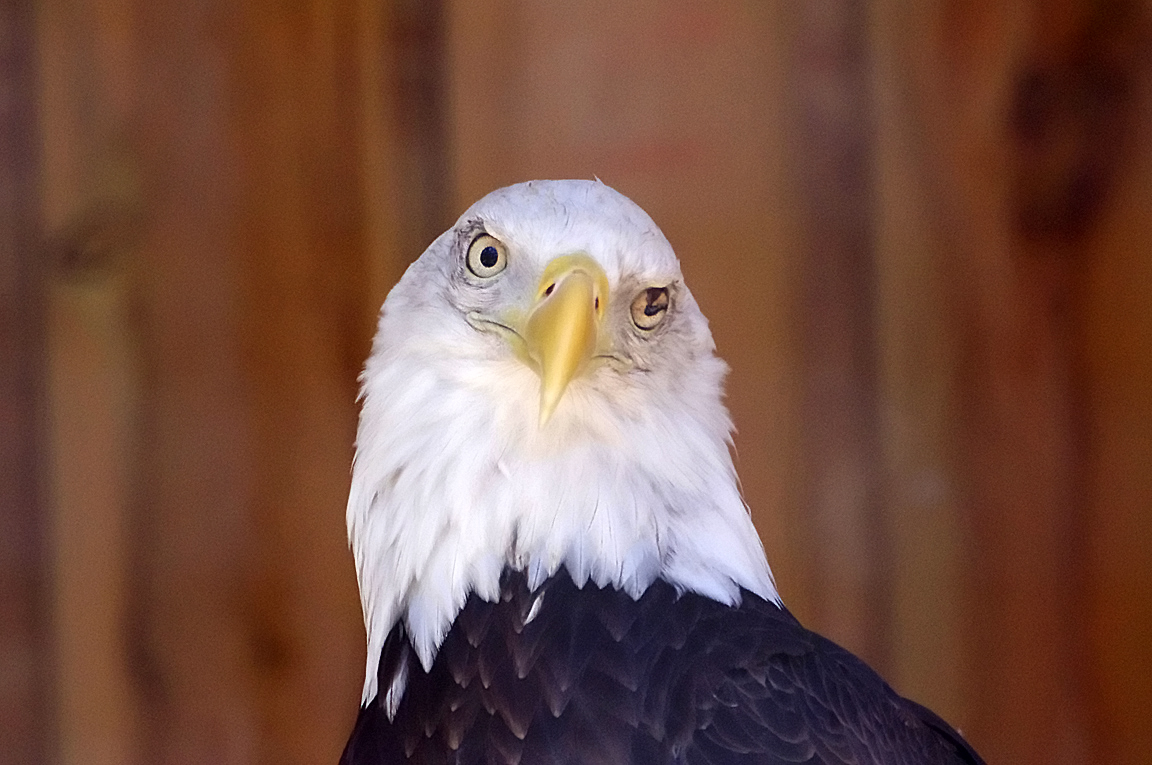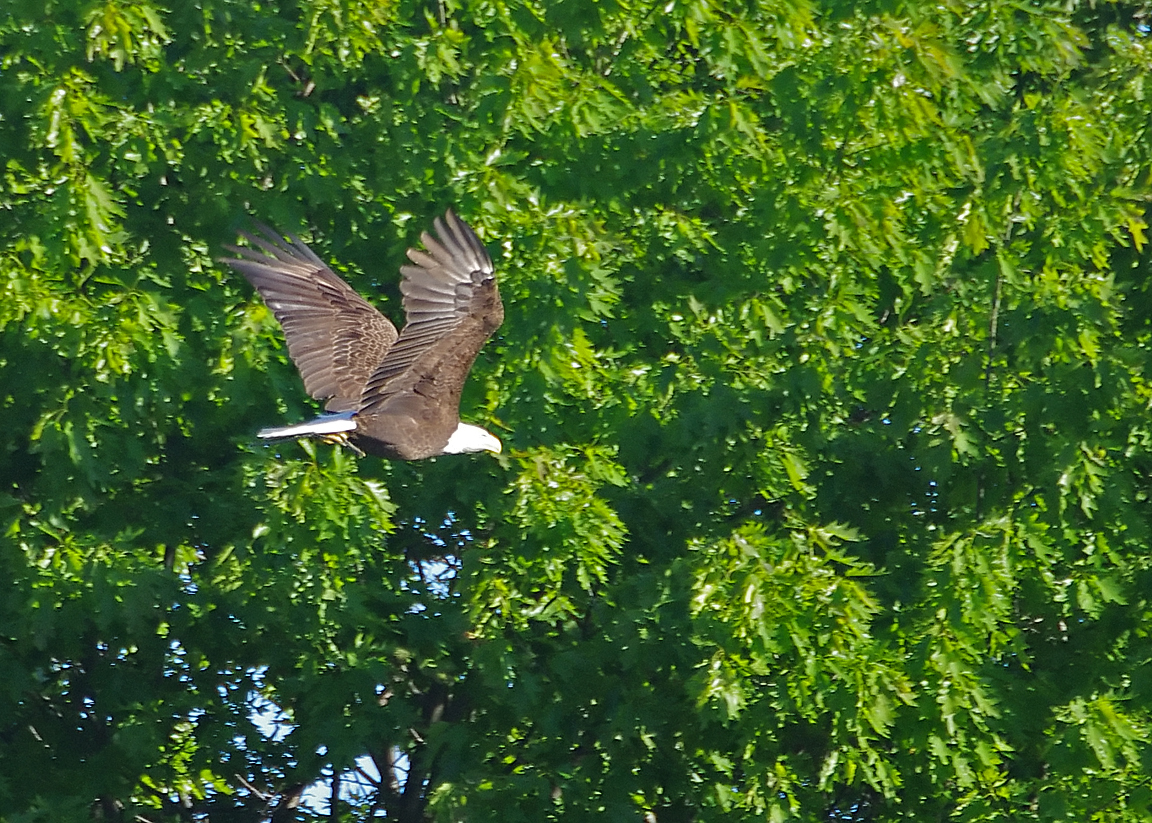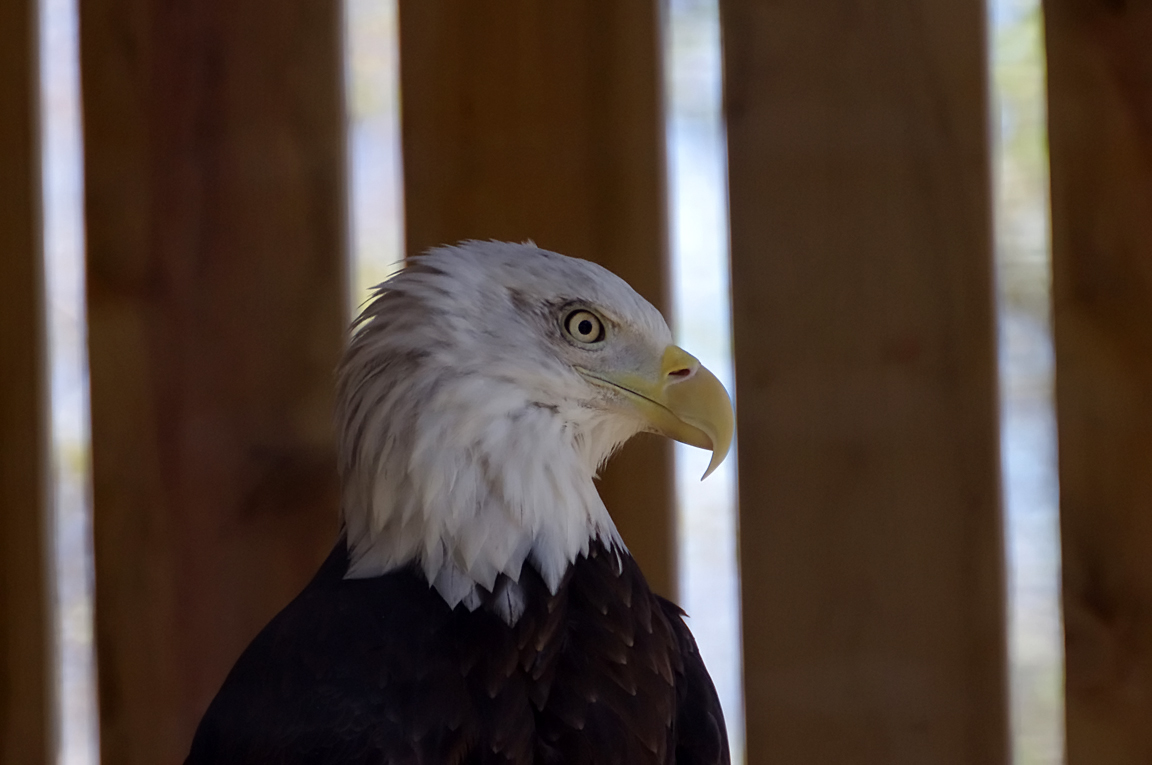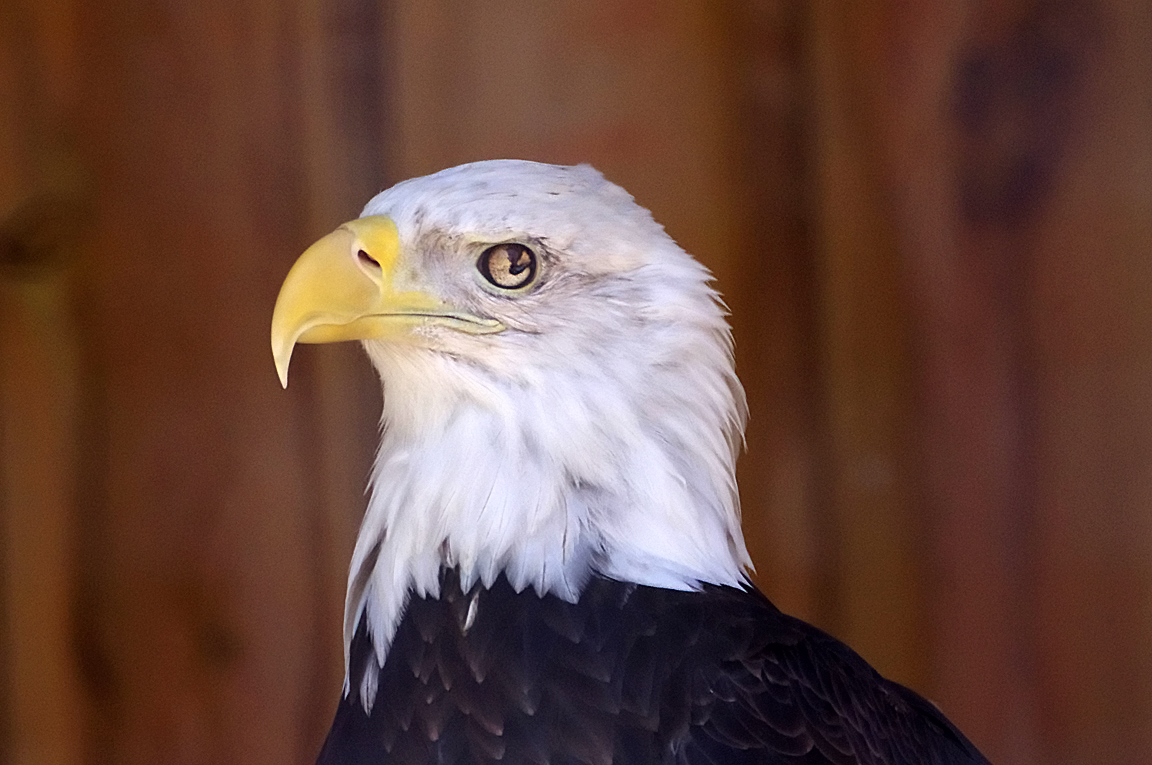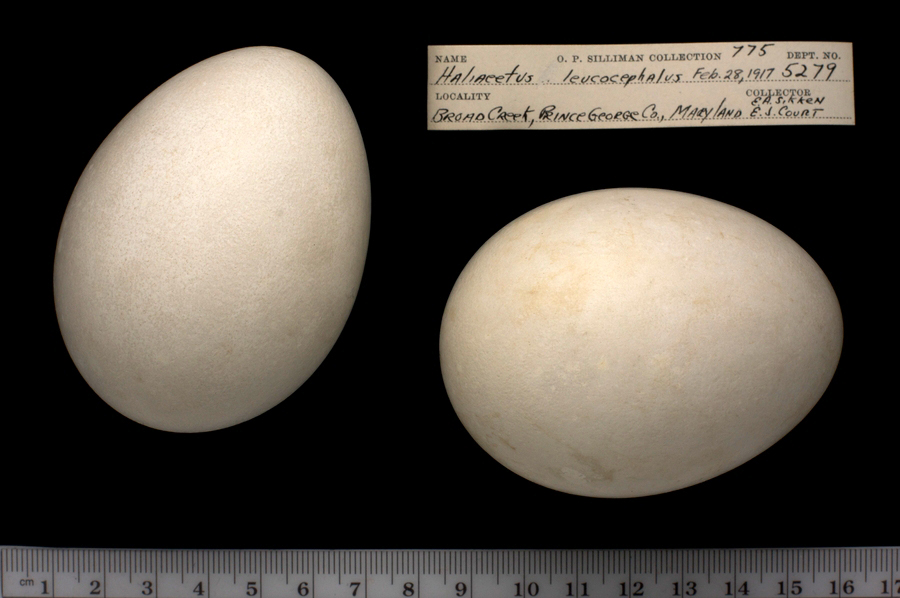|
|
|
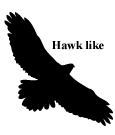 |
American Bald Eagle
|
| Haliaeetus leucocephalus | |
The national emblem of the United States, the Bald Eagle was threatened with extinction in the lower 48 states because of DDT (a type of pesticide) poisoning. Protection under the Endangered Species Act, together with reintroduction programs, brought populations up, and the species was reclassified as Threatened in 1995. By 1999 some were suggesting that Bald Eagles could be removed from the endangered species list, and they were delisted in June 2007 - a true conservation success
Interesting Information
-
Humans are the most important source of mortality for this threatened species.
-
Bald Eagles occasionally hunt cooperatively, with one individual flushing prey towards another.
-
The immature Bald Eagle has a prolonged period of exploration lasting for four years. Some young from Florida have wandered north to Michigan, and birds from California have reached Alaska.
-
A group of eagles has many collective nouns, including an "aerie", "convocation", "jubilee", "soar", and "tower" of eagles.
-
At one time, the word "bald" (balde) meant white - not hairless - referring to the white head and upper neck of the adult Bald Eagle.
-
The Bald Eagle has been the symbol of the United States of America since 1782.
-
They can live up to 40 years in the wild and even longer in captivity.
Description
Adult Description
-
Very large raptor.
-
Adults unmistakable with brown body and white head and tail.
-
Bill large and hooked.
-
Long broad wings held flat while soaring.
-
Length Range: 86-109 cm (34-43 in)
-
Weight: 4761 g (168 oz)
-
Size: Very Large (32 - 72 in)
-
Color Primary: White, Brown
-
Underparts: Dark Brown
-
Upperparts: Dark Brown
-
Back Pattern: Solid
-
Belly Pattern: Solid
-
Breast Pattern: Solid
Sex Differences
Sexes appear similar
Immature
Immature variably patterned with dark brown and white; takes five years to acquire full adult plumage. White not restricted to well defined areas, but appearing scattered throughout body, usually with brown mottling in same area. White in wings primarily in linings and not flight feathers. Bill and cere blackish gray. Eyes dark brown. Feet and lower legs yellow.
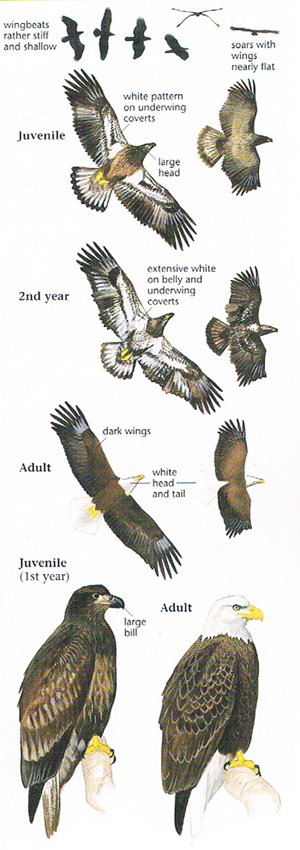
Photo taken from: The Sibley Field Guide by David Allen Sibley
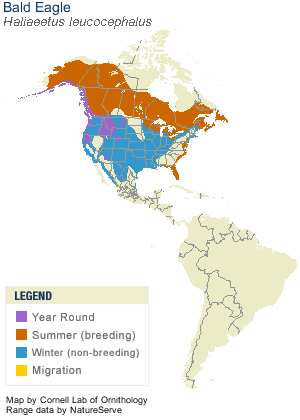
© 2003 Cornell Lab of Ornithology
|
Habitat |
|
|
Behavior |
|
Engages in spectacular flight displays. In the Cartwheel Display, a courting pair flies to high altitude, locks feet together, and then tumbles and cartwheels toward the ground, breaking off at the last moment. Gets food by direct capture, scavenging, and stealing prey from other eagles or other birds and mammals. Will wade in water to catch fish. |
|
Food |
|
Opportunistic feeder, but prefers fish. Eats large birds, mammals, and carrion. |
Taxonomy
| Kingdom: | Animalia |
| Phylum: | Chordata |
| Subphylum: | Vertebrata |
| Class: | Aves |
| Order: | Accipitriformes |
| Family: | Accipitridae |
| Subfamily: | Accipitrinae |
| Genus: | Haliaeetus |
| Species: | Haliaeetus leucocephalus |
| Subspecies: | Haliaeetus leucocephalus alascanus |
| Haliaeetus leucocephalus leucocephalus |
Similar Species |
|
Golden Eagle has feathered legs, white limited to flight feathers, and soars with the outer part of the wings lifted in a slight dihedral. |
|
Bird Sound |
|
Call high-pitched whistling or piping. |
|
Eggs look like this |
|
Photo taken from: ARCTOS Collaborative Collection Management Solution |
|
Bird Sound |
|
Call high-pitched whistling or piping. |
